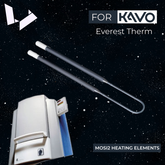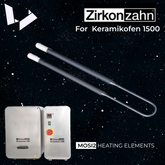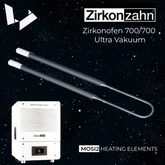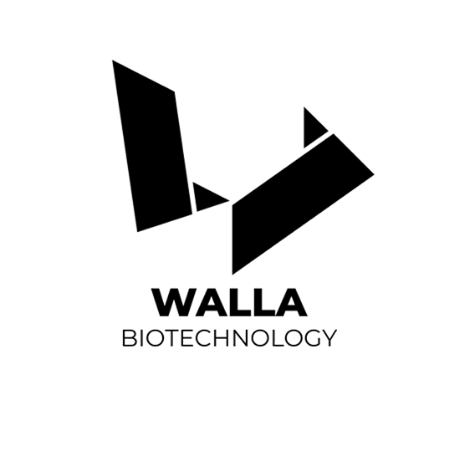The Ultimate Guide to Dental Sintering: Maximizing Your Investment in Sintering Ovens
Why Proper Sintering Matters in Modern Dental Labs
The evolution of dental technology has made zirconia restorations increasingly popular. However, the success of these restorations heavily depends on proper sintering protocols. Through our experience working with dental laboratories across Asia and beyond, we've discovered that many technical issues stem from inadequate sintering processes or poorly maintained equipment.
Latest Technological Advances in Sintering Ovens
The dental industry has witnessed significant improvements in sintering technology over recent years. Modern sintering ovens now offer:
Smart Connectivity
- Advanced computer integration through both wired and wireless connections
- Remote program updates and monitoring capabilities
- Real-time temperature control and adjustment features
Enhanced Software Solutions
- Sophisticated programming options for optimal zirconia processing
- Precise temperature control for achieving ideal translucency
- Custom sintering cycles for different zirconia formulations
Performance Improvements
- Higher voltage options (220V) for faster processing times
- Better temperature stability for consistent results
- Advanced heating element technology for longer service life
Critical Factors in Choosing the Right Sintering Oven
Investment Considerations
Through our partnerships with numerous dental laboratories, we've learned that choosing the right sintering oven is crucial for long-term success. While initial costs might seem high, investing in quality equipment pays dividends through:
- Consistent results
- Reduced material waste
- Lower maintenance costs
- Improved production efficiency
Technical Specifications to Consider
When selecting a sintering oven, pay attention to:
Temperature Capabilities
- Maximum programmable temperature
- Heating element capacity
- Temperature stability range
- Heating and cooling rates
Operational Efficiency
- Power requirements and consumption
- Chamber size and capacity
- Program flexibility
- Maintenance requirements
Best Practices for Sintering Oven Operation
Initial Setup and Calibration
At Walla BC, we follow a strict protocol for testing and validating sintering equipment:
- Thorough initial cleaning of all components
- Temperature calibration using manufacturer-approved methods
- Test cycle running with standardized parameters
- Documentation of all results and settings
Regular Maintenance Schedule
To ensure optimal performance:
Daily Maintenance
- Visual inspection of heating elements
- Cleaning of chamber and surfaces
- Check for any error messages or warnings
Monthly Maintenance
- Detailed temperature calibration
- Thorough cleaning of all components
- Software updates if available
- Performance documentation
Annual Maintenance
- Professional inspection
- Heating element evaluation
- Complete system calibration
- Preventive parts replacement
Common Pitfalls and How to Avoid Them
Inadequate Temperature Monitoring
Many laboratories skip regular temperature checks, leading to inconsistent results. We recommend:
- Using manufacturer-approved temperature tabs
- Following proper testing protocols
- Maintaining detailed records of all temperature checks
- Regular calibration verification
Poor Maintenance Practices
Based on our experience, neglecting maintenance is a common issue that leads to:
- Reduced equipment lifespan
- Inconsistent results
- Higher operating costs
- Increased downtime
Cost-cutting Measures That Cost More
While it's tempting to save money on equipment and maintenance, we've observed that this often results in:
- Lower quality outputs
- Higher material waste
- Increased labor costs
- More frequent replacements
Maximizing Your Return on Investment
Optimal Usage Patterns
To get the most value from your sintering oven:
- Follow manufacturer guidelines strictly
- Maintain detailed operation logs
- Schedule regular maintenance
- Use only approved materials and parts
When to Consider Replacement
Based on our experience at Walla BC, laboratories should consider replacing their sintering ovens:
- After approximately 3 years of heavy use
- When maintenance costs become excessive
- If temperature stability becomes inconsistent
- When new technology offers significant advantages
Why Partner with Walla BC for Your Sintering Needs
As a leading dental laboratory and materials supplier in China, Walla BC brings:
- Extensive testing experience with various materials and equipment
- Proven protocols for optimal results
- Professional support and guidance
- Quality materials at competitive prices
Conclusion
Successful dental laboratory operations require careful attention to equipment selection, maintenance, and operational protocols. At Walla BC, we're committed to helping laboratories achieve consistent, high-quality results while managing costs effectively. By following these guidelines and working with reliable partners, laboratories can optimize their sintering processes and improve their bottom line.
Remember: The key to success in dental laboratory operations isn't just having the right equipment – it's knowing how to use and maintain it properly. Let Walla BC be your partner in achieving excellence in dental restorations.










Leave a comment
All blog comments are checked prior to publishing